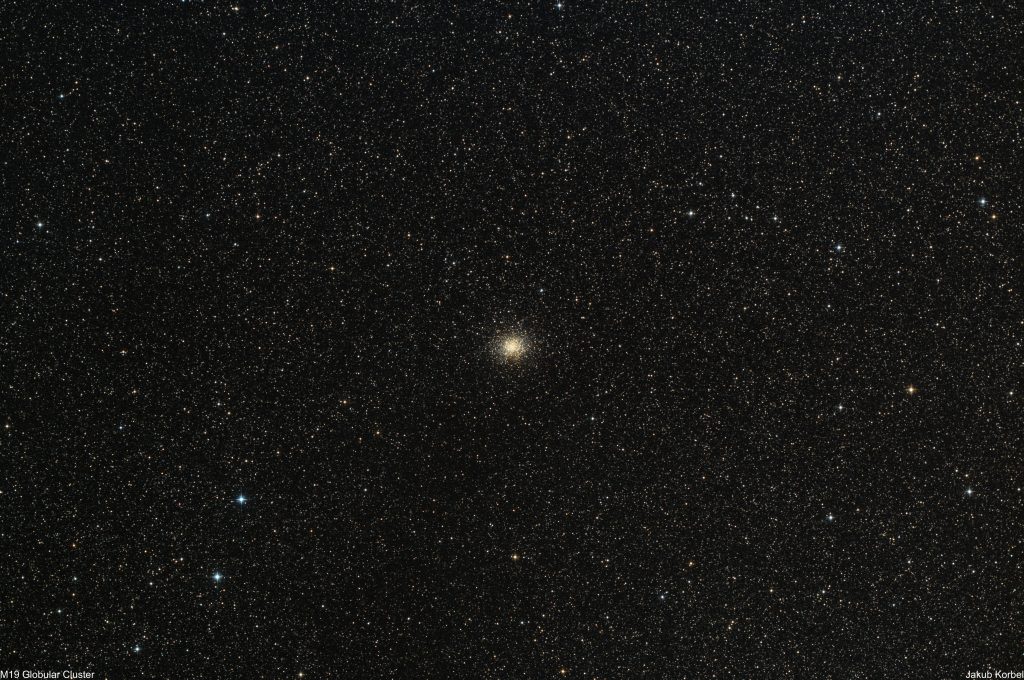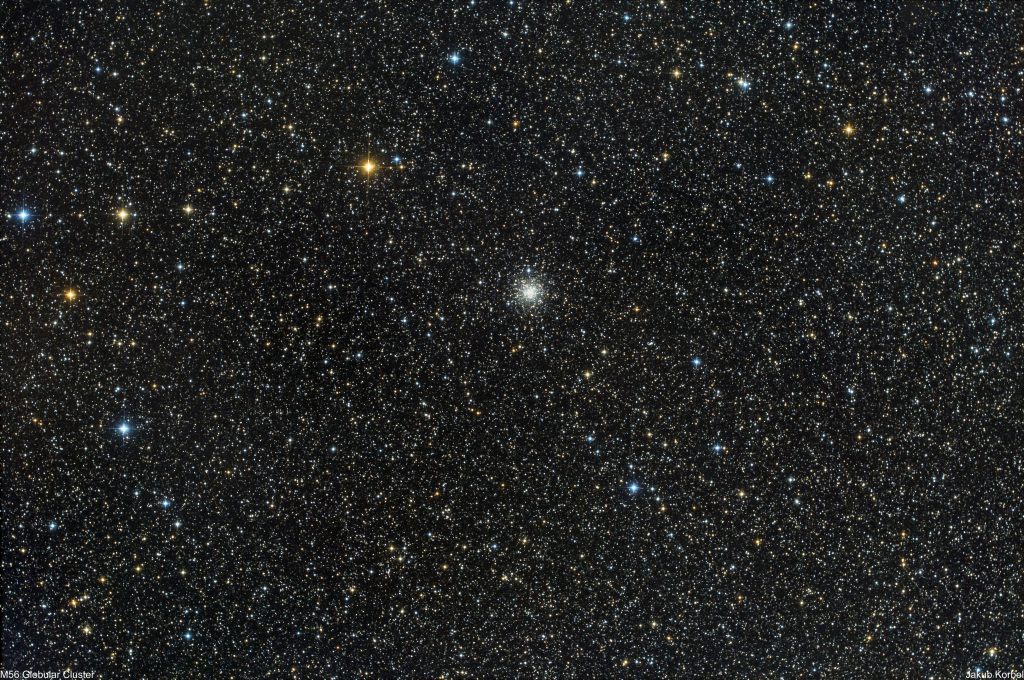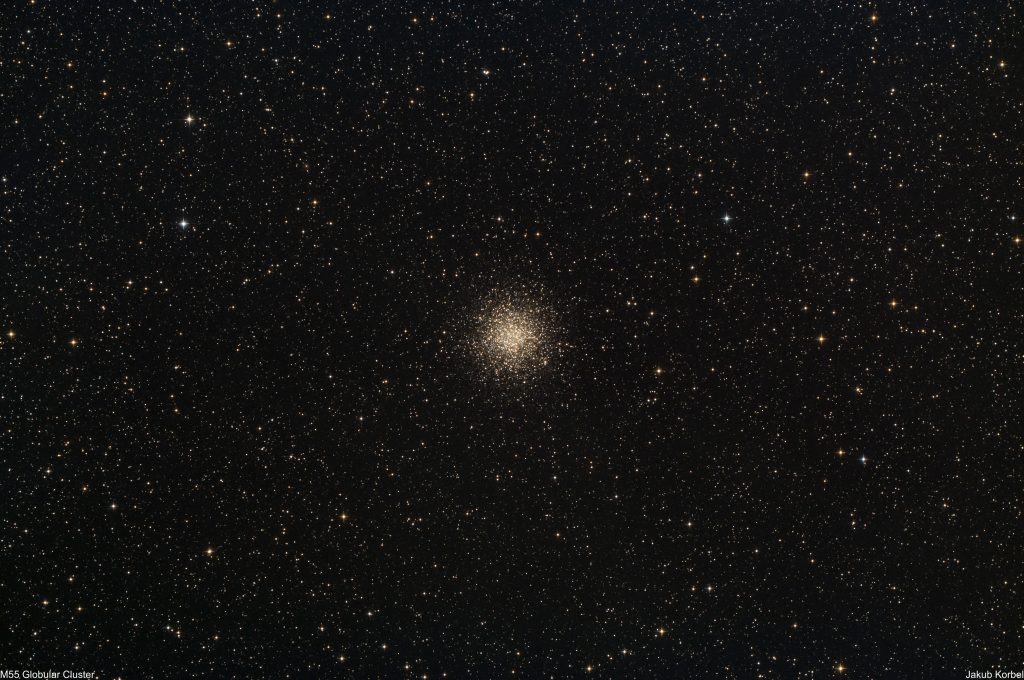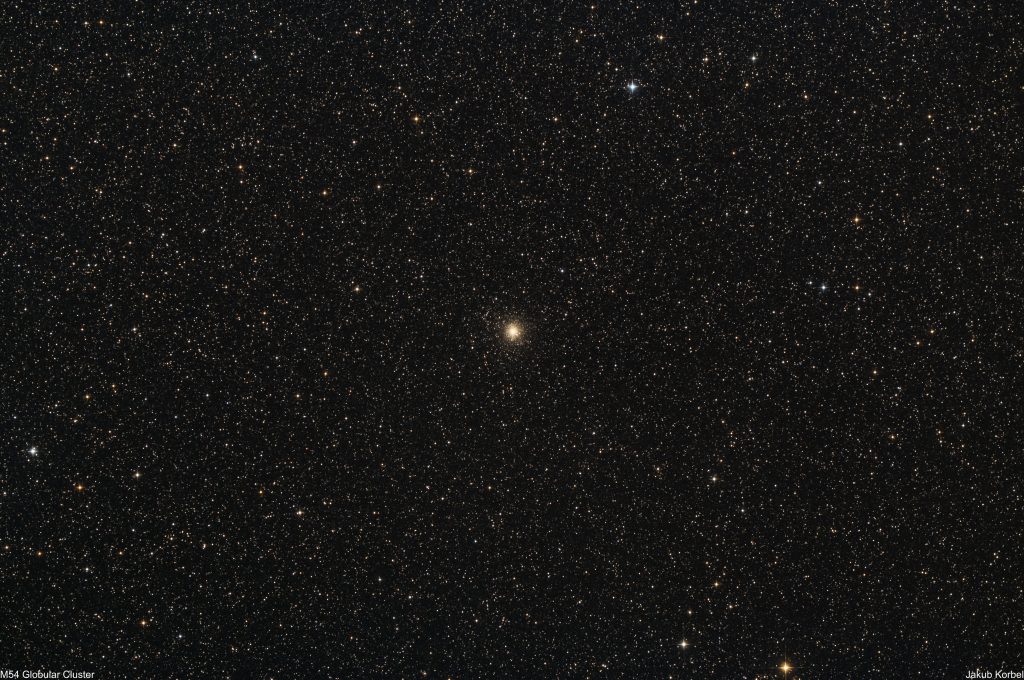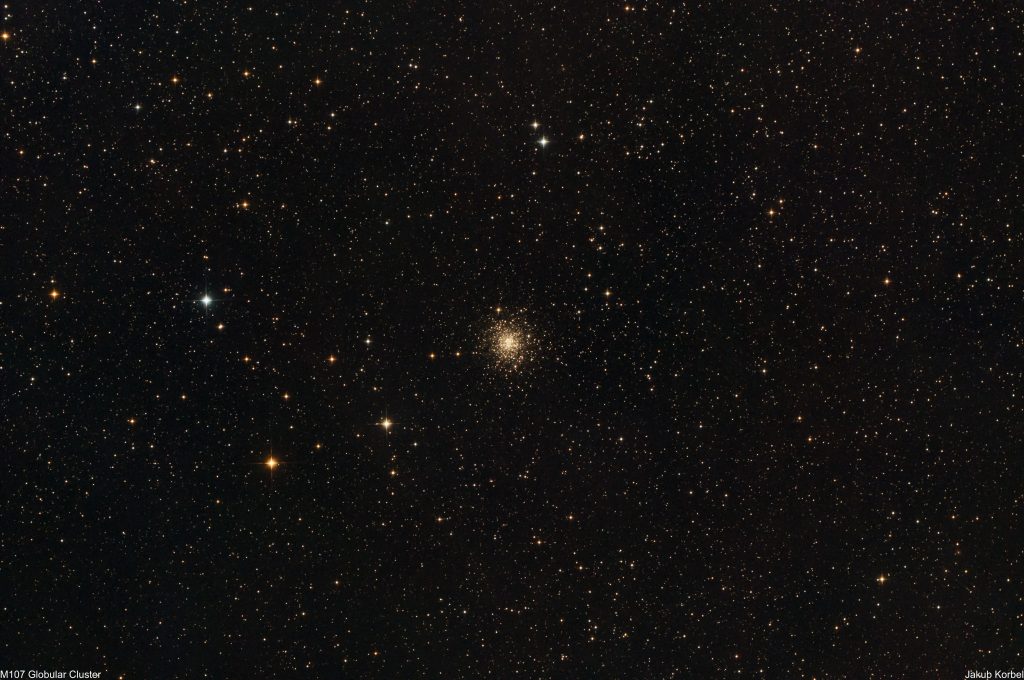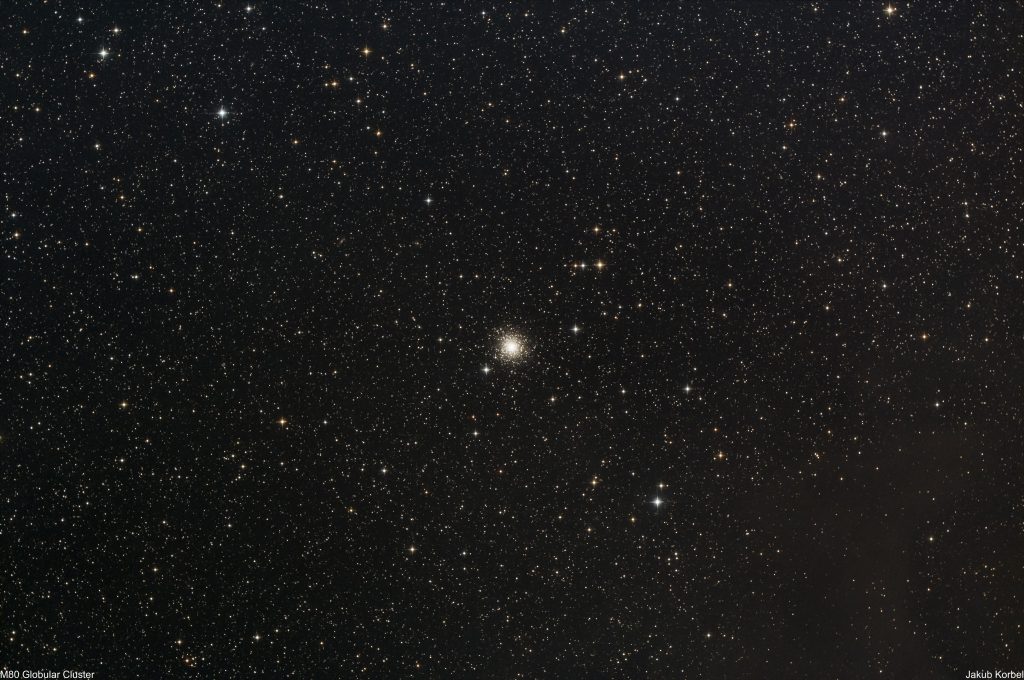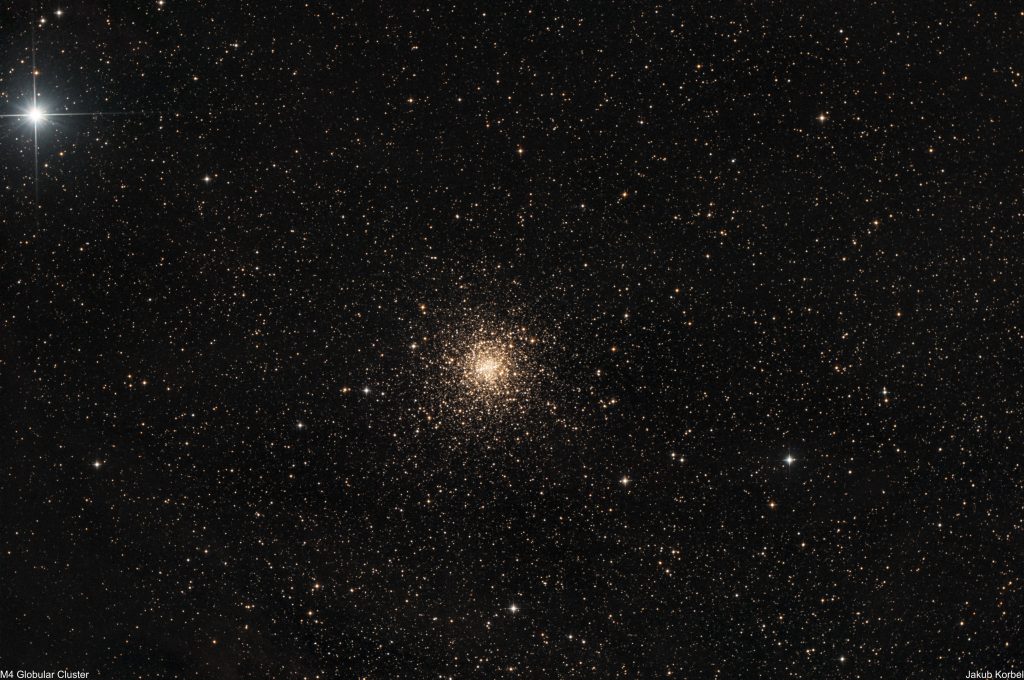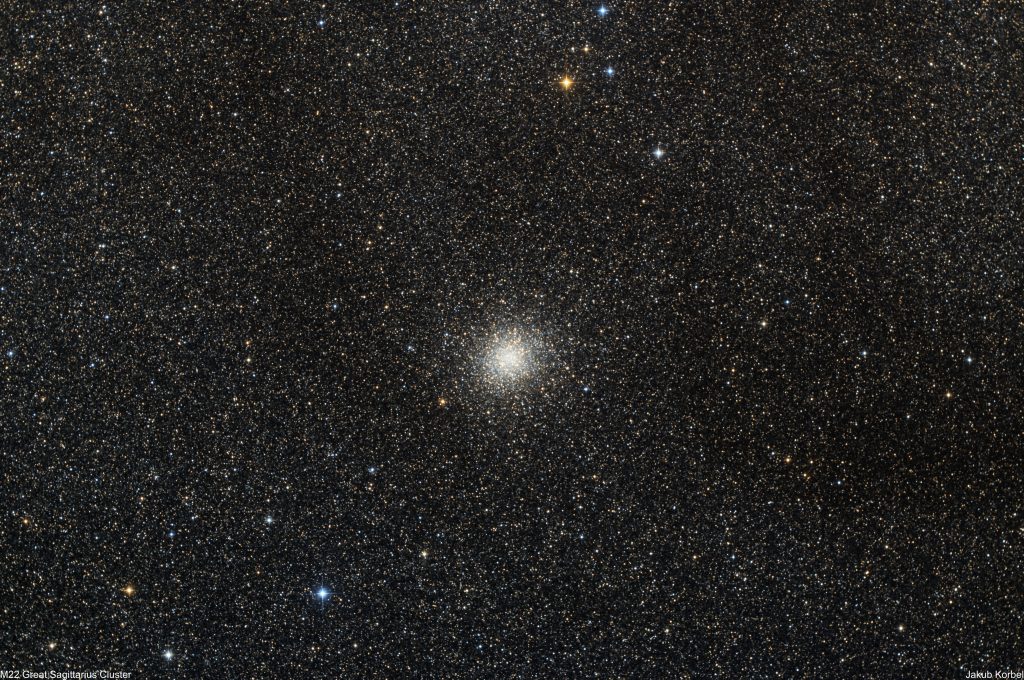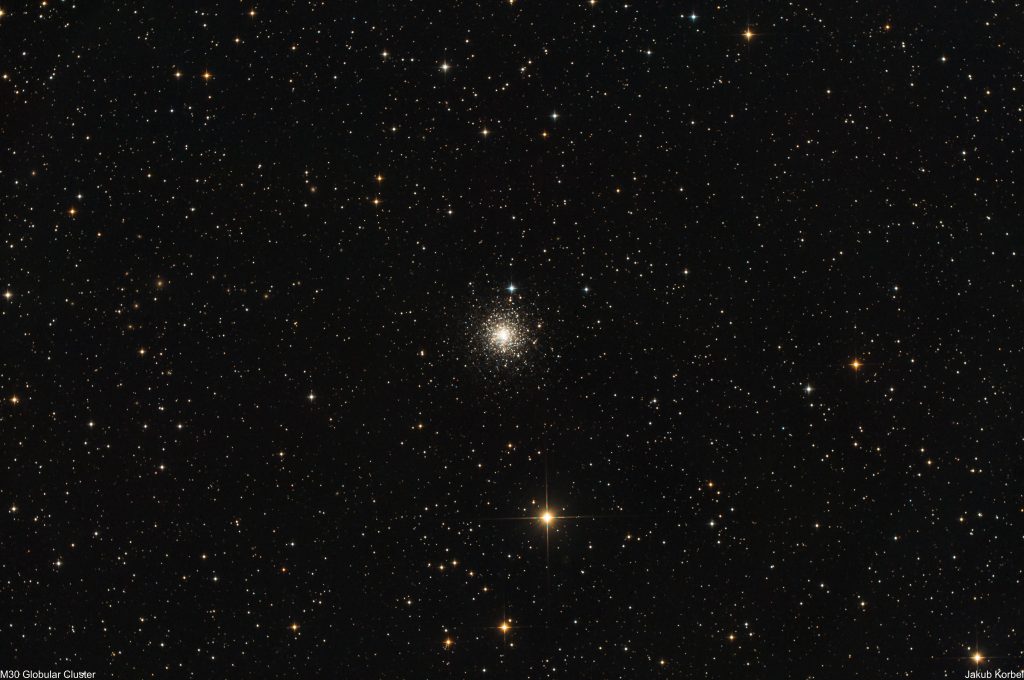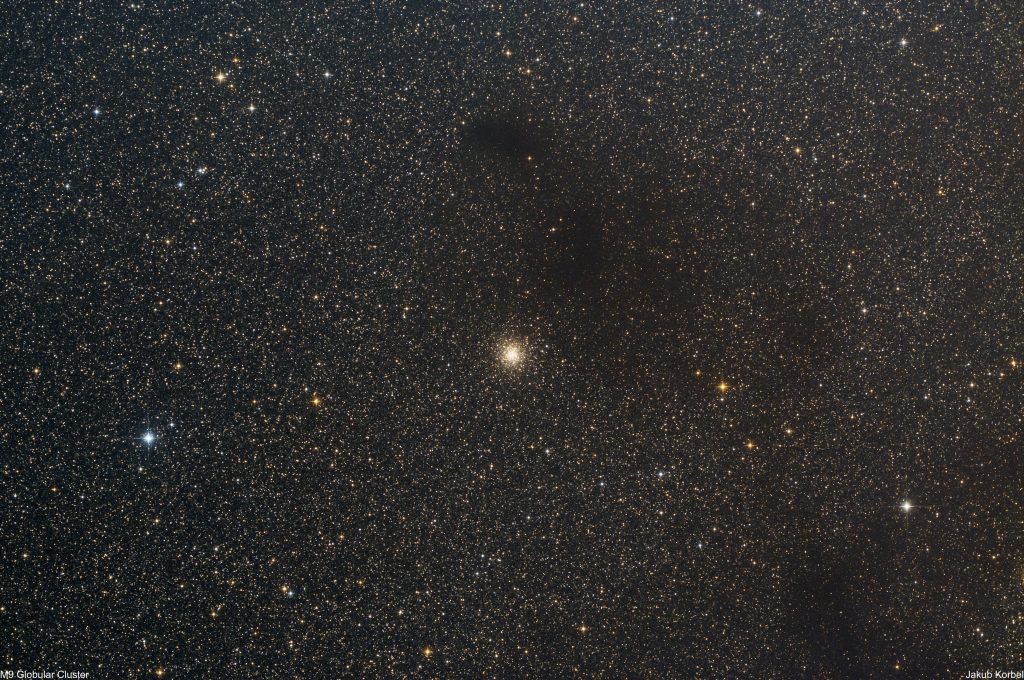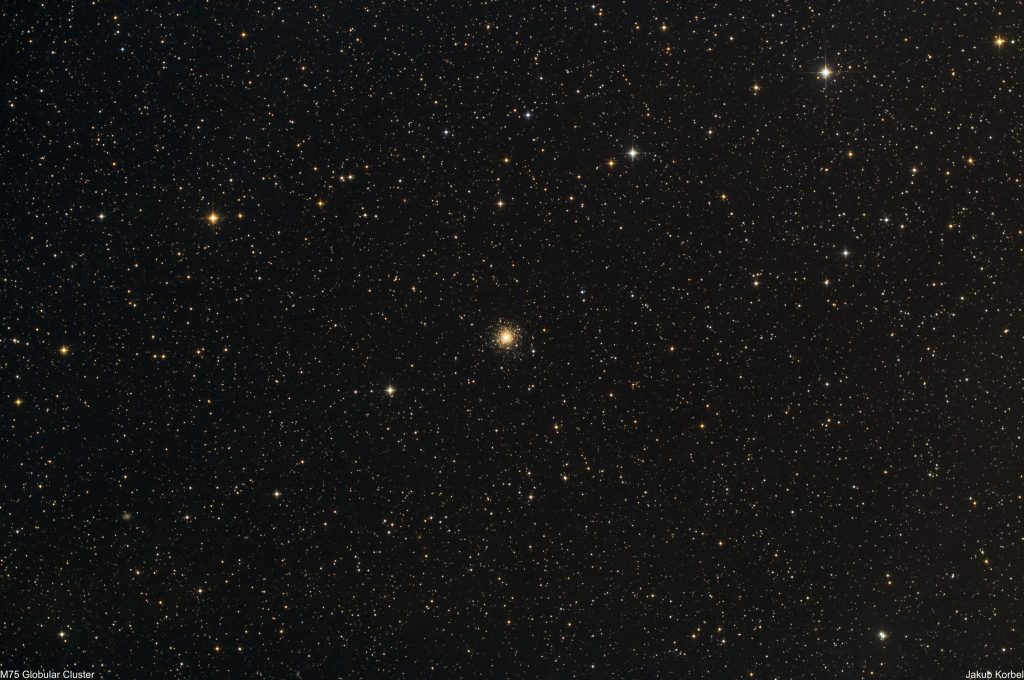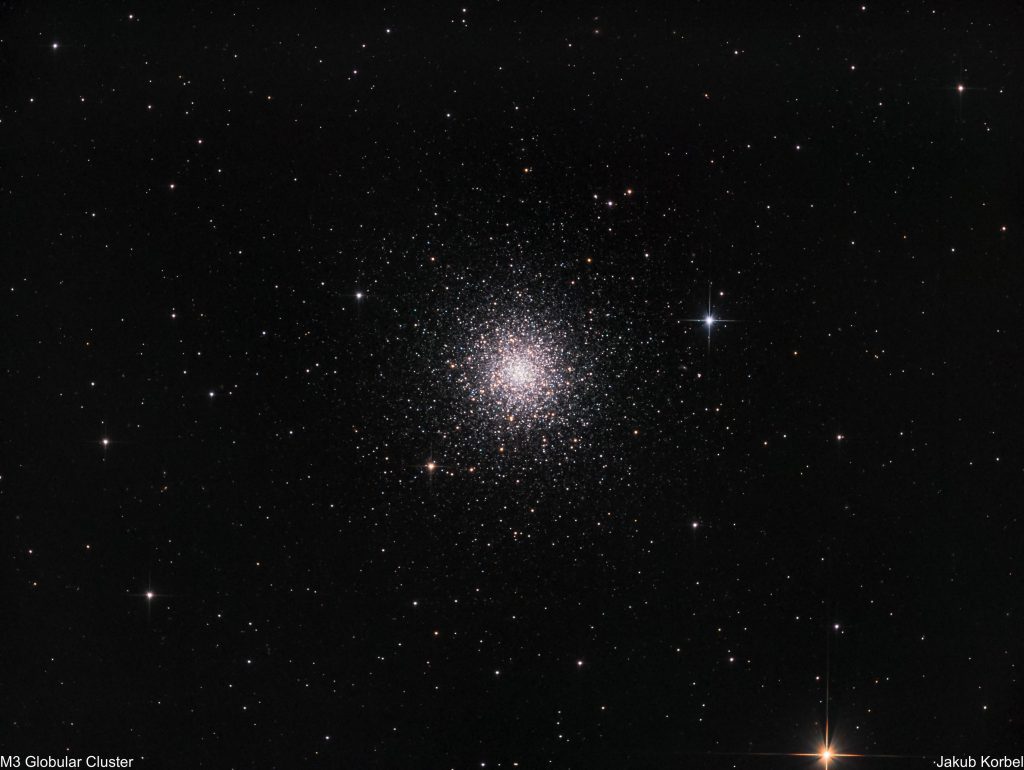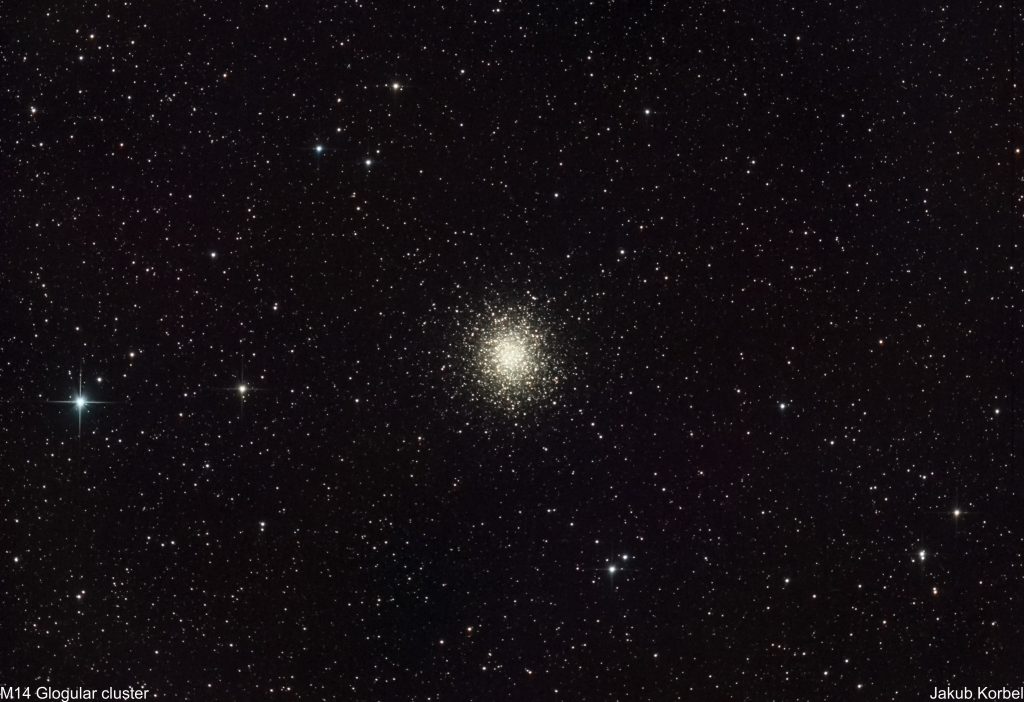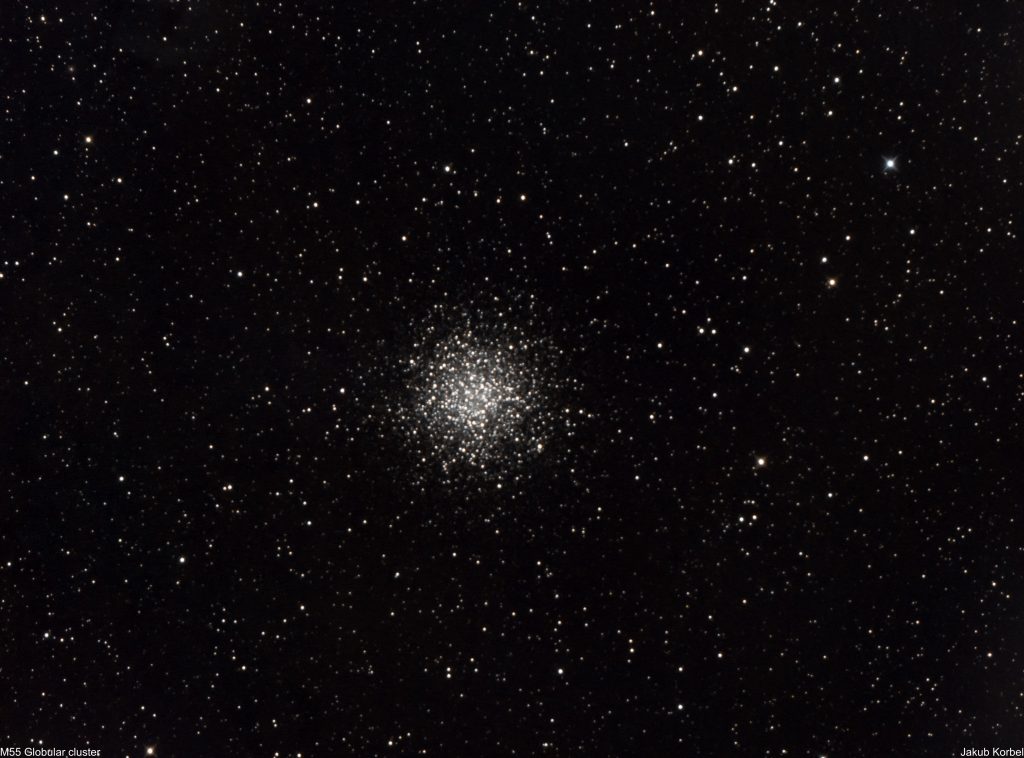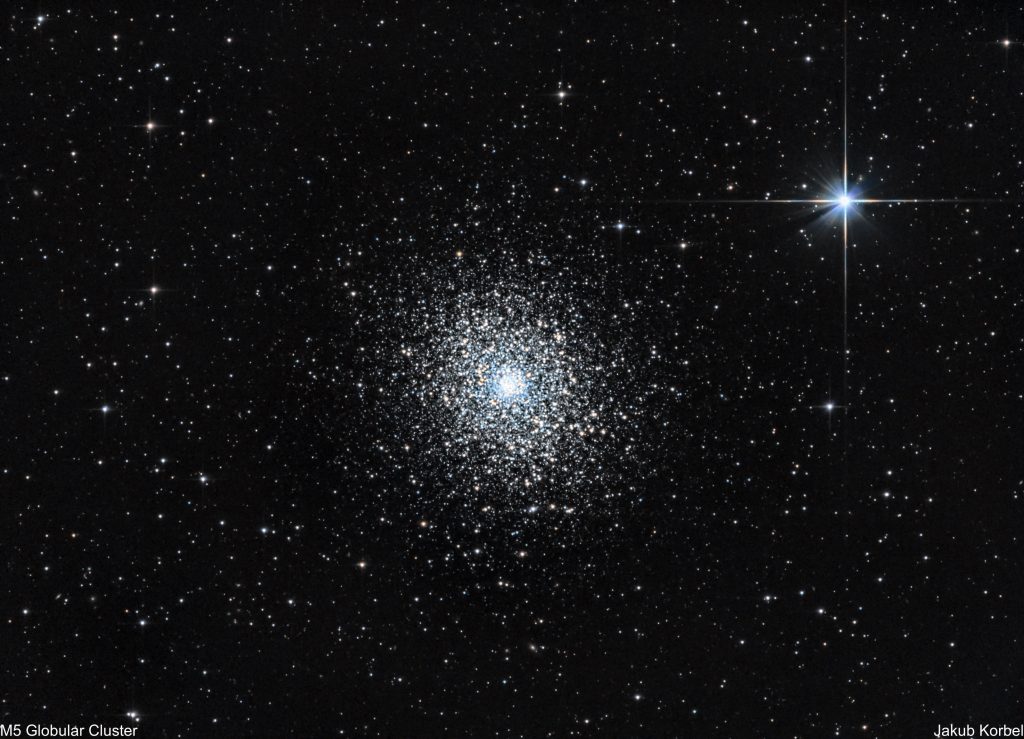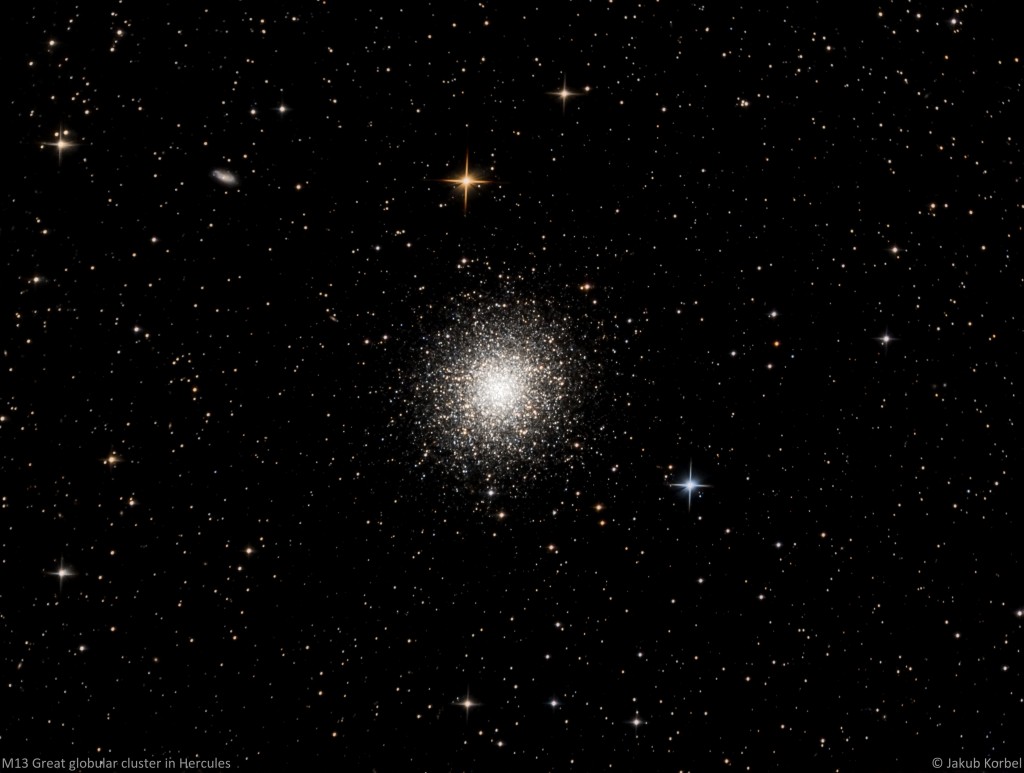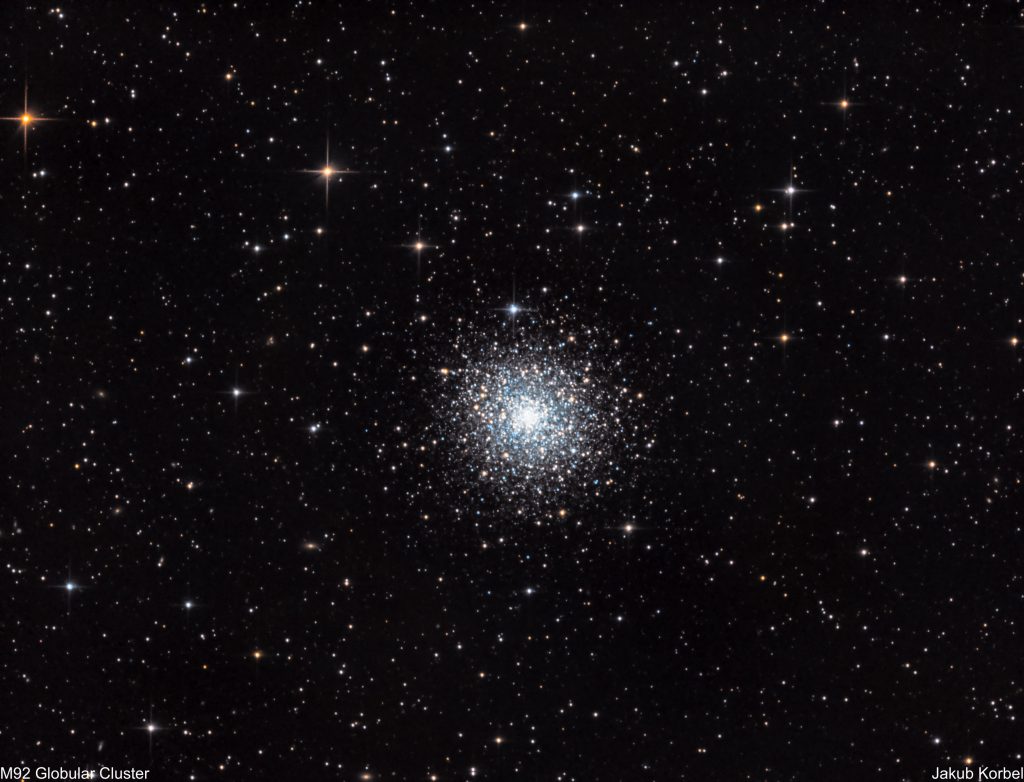Messier 19 is a globular cluster located in constellation Ophiuchus and it is approximately 29000 light-years far from Earth. This cluster is particularly interesting by its oval shape and most probably it’s the most oval globular cluster in our galaxy. The cluster, just like M9, is quite close to the galactic center.
The picture, like many others, was taken on island Milos, under dark Greek skies and it’s an integration of 58 minutes of the exposure.
Technical details:
| Telescope | Newton 150/600 mm |
| Aperture | 150 mm |
| Focal length | 660 mm |
| Mount | iOptron CEM25P |
| Autoguiding | QHYCCD miniGuideScope 130 mm f/4.3, ZWO 174 MM |
| Camera | ZWO 071 Pro @-10C |
| Corrector | Explore Scientific HR coma corrector |
| Filters | Astronomik L-1 - UV IR Block Filter |
| Exposure | 29x120s, Gain 134, bin 1x1, |
| Date | 2018-09-09 |

